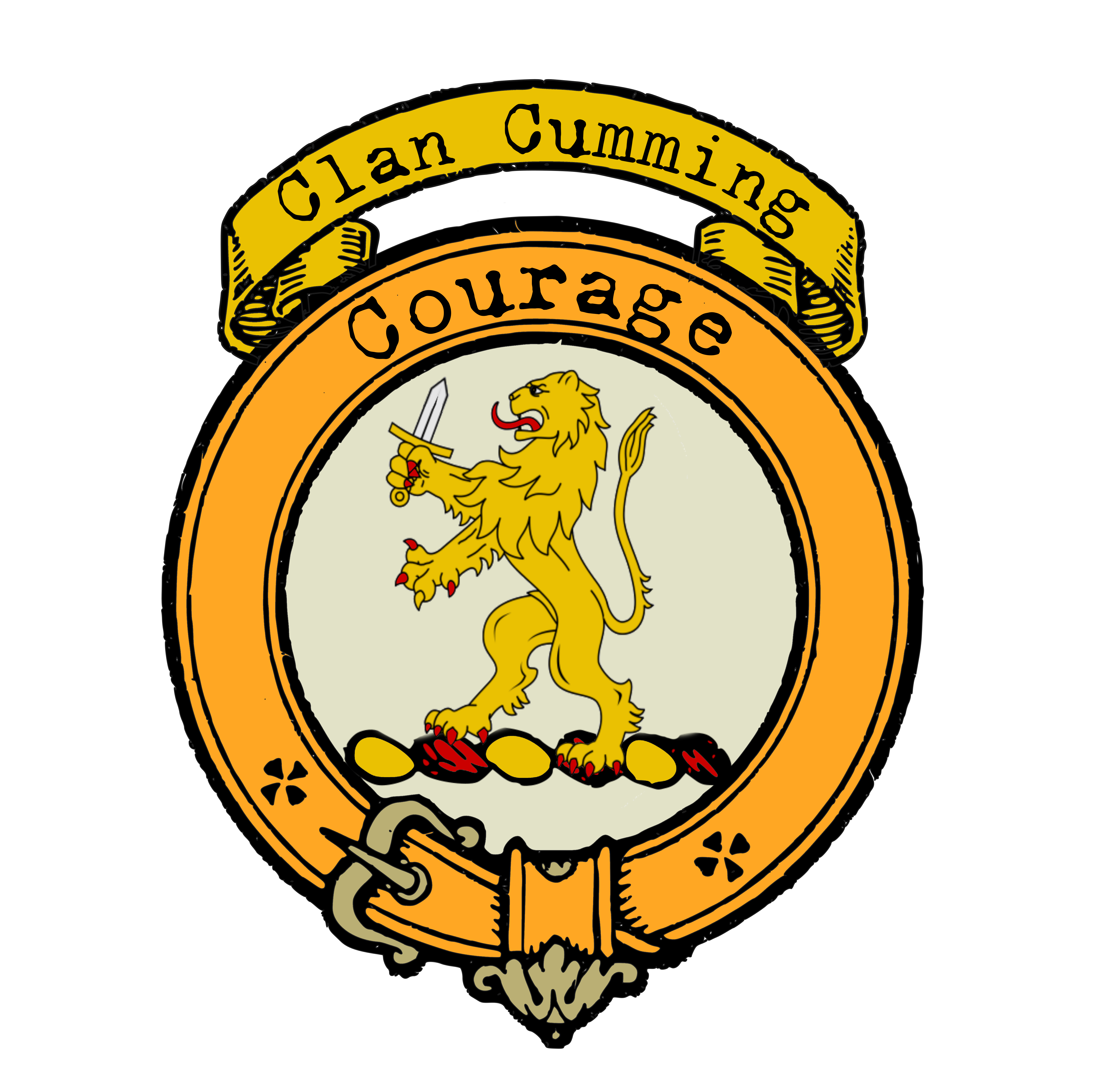Cumming Clan
|
|
CREST: A lion rampant Or, in his dexter paw a dagger Proper MOTTO: Courage TRANSLATION: N/A VARIATIONS: Comyn, Cummings TARTAN: Red ground, Green Checks, White and Black lines. |
 The history of Clan Cumming, also spelled Comyn or Cummings, is a long and fascinating one that spans many centuries and involves various members of the family in Scottish politics, wars, and even scandals. The history of Clan Cumming, also spelled Comyn or Cummings, is a long and fascinating one that spans many centuries and involves various members of the family in Scottish politics, wars, and even scandals.
The family’s origins can be traced back to Comines, a town in northern France on the border with Belgium. They claimed to be descended directly from the emperor Charlemagne and were of Norman origin. Robert de Comyn came to England with William the Conqueror in 1066 and was granted lands in Northumberland. His grandson, William, came to Scotland in the reign of David I and was given lands in Roxburghshire, eventually rising to become Chancellor of Scotland. William’s nephew, Richard, married a granddaughter of Donald Bane, later Donald III, the second son of Duncan I. Through strategic marriages, the family acquired three earldoms: Monteith, Menteith, and Atholl and Buchan. After the death of Queen Margaret, the “Maid of Norway,” in 1290, at least six claimants to the Scottish throne, including the Comyn guardians, invited Edward I of England to decide who should succeed to the throne. Edward’s choice was John Balliol, but resistance broke out again, with claimants switching allegiances in the struggles to win the throne and break free of England. In 1306, Robert the Bruce, the grandson of a claimant to the throne, invited Red Comyn to a meeting in the church of the Greyfriars in Dumfries to negotiate a compromise. They quarreled, and Bruce stabbed Comyn to death in the church, for which Bruce was excommunicated. Comyn’s son was defeated in a skirmish with Bruce and fled to join the English, only to be killed at the Battle of Bannockburn in 1314. Despite this setback, many branches of the family continued to thrive, with the name generally spelled “Cumming.” The Cummings of Altyre were recognized as the chiefly line, and Sir Alexander Cumming of Altyre was created a baronet in 1804. The family later acquired the estate of Gordounstoun, which is now well-known for the public school established there. In the 19th century, Sir William Gordon-Cumming of Altyre served with the Scots Guards in the Zulu War of 1879 and later in the Guards’ Camel Regiment. However, he is perhaps best remembered for his part in the royal Baccarat Scandal, in which the Prince of Wales, later Edward VII, became the first member of the royal family to give evidence in a civil court in an action for slander arising out of an accusation of cheating at a game of cards. In conclusion, the history of Clan Cumming is a complex and intriguing one that involves the family’s Norman-French origins, claims to descent from Charlemagne, strategic marriages, involvement in Scottish politics and wars, and even a scandal involving a member of the royal family. Today, the Cummings of Altyre are recognized as the chiefly line, and the family continues to have a place in Scottish history and culture. |
|
Citations:
|
|

Purchase @ Redbubble
Purchase @ Amazon.com
Purchase @ Amazon.co.uk

